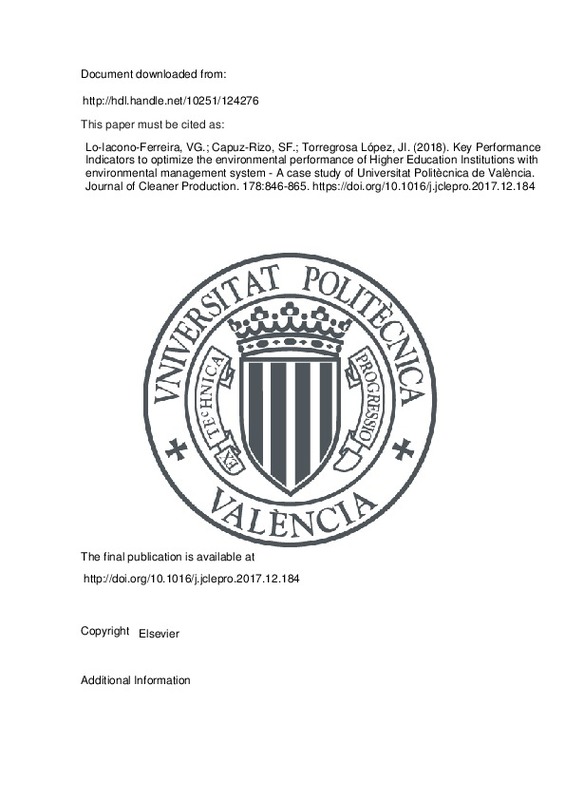JavaScript is disabled for your browser. Some features of this site may not work without it.
Buscar en RiuNet
Listar
Mi cuenta
Estadísticas
Ayuda RiuNet
Admin. UPV
Key Performance Indicators to optimize the environmental performance of Higher Education Institutions with environmental management system - A case study of Universitat Politècnica de València
Mostrar el registro completo del ítem
Lo-Iacono-Ferreira, VG.; Capuz-Rizo, SF.; Torregrosa López, JI. (2018). Key Performance Indicators to optimize the environmental performance of Higher Education Institutions with environmental management system - A case study of Universitat Politècnica de València. Journal of Cleaner Production. 178:846-865. https://doi.org/10.1016/j.jclepro.2017.12.184
Por favor, use este identificador para citar o enlazar este ítem: http://hdl.handle.net/10251/124276
Ficheros en el ítem
Metadatos del ítem
| Título: | Key Performance Indicators to optimize the environmental performance of Higher Education Institutions with environmental management system - A case study of Universitat Politècnica de València | |
| Autor: | ||
| Entidad UPV: |
|
|
| Fecha difusión: |
|
|
| Resumen: |
[EN] Environmental performance is becoming increasingly important to organizational decision-making boards. As with other organizations, Higher Education Institutions concerned with environmental performance require tools ...[+]
|
|
| Palabras clave: |
|
|
| Derechos de uso: | Reconocimiento - No comercial - Sin obra derivada (by-nc-nd) | |
| Fuente: |
|
|
| DOI: |
|
|
| Editorial: |
|
|
| Versión del editor: | http://doi.org/10.1016/j.jclepro.2017.12.184 | |
| Tipo: |
|







![[Cerrado]](/themes/UPV/images/candado.png)



